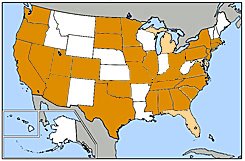St. Cloud, MN
Last night I had dinner with Jerry Wellik, a gem of a fellow who is a professor of education at St. Cloud State University, about 70 miles outside of Minneapolis. He grew up in a little town in Iowa near where the National Hobo Festival has taken place for over a hundred years. (It’s located at a site near the RR tracks, incidentally.)
As you might imagine, the festivities involve a fair bit of storytelling, and of course, now Jerry lives in Minnesota, home of great storytellers like Garrison Keillor and Kevin Kling. Jerry has been using storytelling in his classes for years now, and teaches other educators to do the same.

Storytelling, along with music, rhythm and dance, have been a part of human pedagogy for hundreds of thousands of years. It is how humans have learned since before we were fully upright, and is hard-wired into our DNA. These are the things that make up the backbone of our cultures, and therefore are what make us unique as people, and unique as a species.
The question, of course, is why they are not a larger part of our pedagogy now. The proof of their effectiveness is in our genes, in the research, and in the eyes of our children.
I have never really thought of myself as a “storyteller,” but looking back at my practice, some of the most intent and focused times in my classroom is when I’m telling a story. Or better yet, making up a story.

I use stories to introduce inquiry labs, to create scenarios around a new concept, to narrate theatre productions, and to explain how two unsuspecting volunteers fell in love and got married so we can determine their theoretical offspring’s genetic traits. Sometimes I read children’s books to my middle school students, and sometimes we write and read our own to each other.
If stories can illustrate the concept, there is often no better way to remember it. After all, we’ve been creating, listening to, and living out stories for as long as we’ve been human.









Wow - this sounds like the topic of a great book!
ReplyDelete